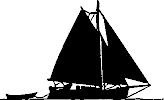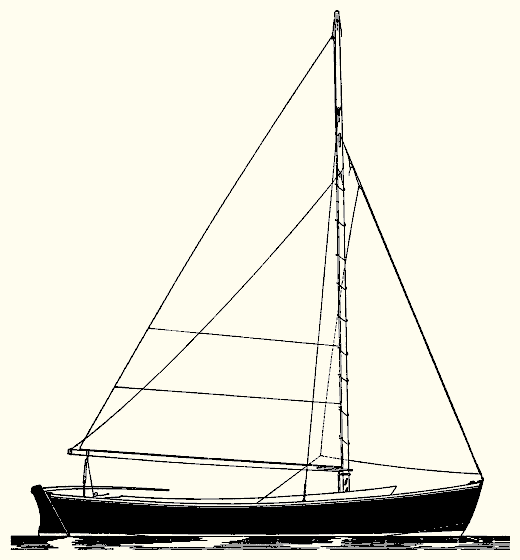
| Ben A 24' 5" Double-Ended V-Bottom Daysailing Knockabout By William & John Atkin |
| A Double-End V Bottom Knockabout | |

| |
| Let's first look at the dimensions of the plans which grace the pages of this month's MoToR BoatinG. The subject of these pages has an over all length of 24 feet 5 inches; the water line length is, 22 feet; the breadth, 6 feet 8 inches; and the draft slightly less than 3 feet. The freeboard at the bow is 2 feet 10 1/2 inches; at the lowest place, 1 foot 8 1/2 inches; and at the stern, 2 feet 3 1/2 inches. And so one sees this is not a very little boat, and on the other hand not a big handful for one able bodied man or woman to handle. A simple knockabout built from the designs shown here would be an ideal craft for varied uses. One of these which comes to mind is the teaching of sailing and small boat handling for the Mariners, that excellent organization sponsored by The Girls Scouts of America and which fosters all phases of small boat seamanship. | |

| |
| Ben is rigged as a knockabout and carries 252 square feet of sail; 70 feet of this is in the staysail; 182 square feet in the mainsail. The rig is all inboard, easy to handle and of practical simplicity. The mast carries two shrouds and a single headstay. The mast is solid and on the large size. There is no necessity nor reason for more complicated standing rigging. The luff of the main sail is held to the mast by wooden hoops; these to hoist only to the point shown on the sail plan. The mainsail should be made with a wire luff rope and if properly hoisted, set, and held taut by the tackle at the tack, will stand well without further embellishments. | |

| |
| If the rig is simplicity, the hull is also simplicity. Every device we can think of has been utilized to reduce the cost of building materials, fittings, harware, and fastenings; not forgetting the righting keel. This usually expensive piece of the construction, as shown on the plans, is cast of concrete and reinforced by iron rods and weights of clean scrap iron. Fastenings, of course, are galvanized iron throughout. | |

| |
| For the purpose of simplicity, and for other very excellent reasons, the hull is of double-end model, has a straight keel, straight sections, excepting those below the chines abaft station 6, and very easy lines. The latter contribute to the ease of laying planking and springing in the chine logs and clamps. A narrow hull is easier to frame and plank than one which has what is called "wholesome beam." More than a little study and time has been put into the designing of our latest child of the sea. Ben, therefore, will be a fine sailer and a well behaved boat. And so. Shipmates, stick to the intent and spirit of the plans and get the most from the time and funds devoted to the building of the boat. | |
Sorry, these plans are not available. | |
| BACK TO PLAN LIST | |